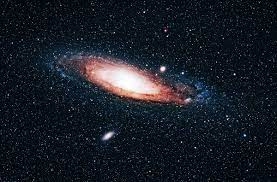Unlocking the Mysteries of the Cosmos: A Journey into Astronomy

Unlocking the Mysteries of the Cosmos: A Journey into Astronomy
Astronomy, the oldest of the natural sciences, invites us on an exhilarating journey across the vast expanse of the universe, where stars are born, galaxies collide, and black holes lurk in the depths of space. From ancient civilizations gazing at the heavens in awe to modern astronomers probing the farthest reaches of the cosmos, humanity's fascination with the night sky has fueled centuries of discovery, wonder, and exploration.
At its core, astronomy is the study of celestial objects and phenomena, ranging from planets and moons to stars, galaxies, and beyond. Armed with telescopes, spectrographs, and space probes, astronomers peer into the depths of space, unraveling the mysteries of the cosmos and expanding our understanding of the universe.
One of the central pillars of astronomy is the study of stars, those luminous beacons that dot the night sky and illuminate the darkness of space. Stars come in a dazzling array of sizes, colors, and temperatures, from the fiery giants that blaze with the intensity of a thousand suns to the cool, dim dwarfs that linger on the fringes of the galaxy. Through spectroscopy, astronomers dissect the light emitted by stars, revealing their chemical composition, temperature, and evolutionary stage, unlocking clues to their origins and fates.
Beyond individual stars lie galaxies, vast islands of stars, gas, and dust that populate the universe in dizzying abundance. From the majestic spirals of Andromeda to the irregular clouds of the Magellanic Clouds, galaxies come in a variety of shapes and sizes, each telling a unique story of cosmic evolution. By studying the distribution and motion of galaxies, astronomers trace the large-scale structure of the universe, unraveling its history and destiny.
At the heart of many galaxies lie supermassive black holes, enigmatic monsters that devour matter and distort space-time with their immense gravity. These cosmic behemoths, lurking in the depths of galactic nuclei, serve as cosmic laboratories for testing the laws of physics under extreme conditions. Through observations of the motions of stars and gas clouds around black holes, astronomers probe the nature of gravity, space, and time, shedding light on the fundamental mysteries of the universe.
Moreover, astronomy is not just about observing the cosmos; it is also about understanding our place within it. The search for exoplanets, worlds orbiting distant stars, offers tantalizing glimpses of other Earth-like worlds and the possibility of life beyond our solar system. By studying the atmospheres of exoplanets and the conditions necessary for habitability, astronomers explore the potential for life elsewhere in the universe and our place in the cosmic tapestry of existence.
As we peer into the depths of space, astronomy inspires awe, wonder, and humility in the face of the vastness and complexity of the cosmos. It reminds us of our shared humanity and the interconnectedness of all life on Earth. In the words of Carl Sagan, "The cosmos is within us. We are made of star-stuff. We are a way for the universe to know itself."
In conclusion, astronomy is a journey of discovery, enlightenment, and wonder that transcends the boundaries of space and time. From the depths of interstellar space to the innermost recesses of the human mind, astronomy invites us to contemplate the mysteries of the universe and our place within it. As we gaze up at the night sky, let us embrace the spirit of curiosity, exploration, and awe that has propelled humanity's quest to unlock the secrets of the cosmos.
- Arts
- Business
- Computers
- Игры
- Health
- Главная
- Kids and Teens
- Деньги
- News
- Recreation
- Reference
- Regional
- Science
- Shopping
- Society
- Sports
- Бизнес
- Деньги
- Дом
- Досуг
- Здоровье
- Игры
- Искусство
- Источники информации
- Компьютеры
- Наука
- Новости и СМИ
- Общество
- Покупки
- Спорт
- Страны и регионы
- World


